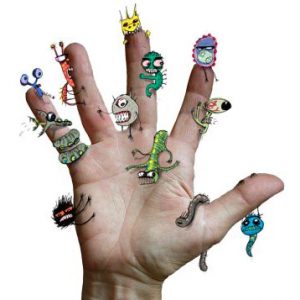Why Influenza is NOT Treated with Antibiotics
Every day parents come to the pediatrician with the question-what is it? A common cold or something serious?
Millions of children miss school and millions of parents do not go to work because of childhood diseases. And most often-it is a common cold or ARI, ie viral disease. However, there are also bacterial infections that require attention and treatment under the guidance of a pediatrician.
What are viruses?
Viruses are too small to be seen by the naked eye. They cannot reproduce on their own, so they must invade the host cell and use it for their own reproduction. Viruses consist of genetic materials (DNA or RNA) surrounded by a protective protein shell. They are able to penetrate the cells because of their small size.
Mucosal cells, such as those that cover the respiratory tract, are susceptible to viruses when inhaled. At the same time, the virus is difficult to penetrate through the skin.
Viral infection
Common viral infections such as acute respiratory-viral diseases or ORVS usually accompanied by runny nose, cough, fever, redness of the throat and restless sleep. No antibiotics or antiviral drugs can accelerate recovery from a cold or ARI.
 The duration of the disease in children can be up to 14 days and occur more often than in adults – up to 6-8 times annually. This is the average norm! But if your child is sick more often – this is an occasion to examine the child or to reconsider their attitude to child care.
The duration of the disease in children can be up to 14 days and occur more often than in adults – up to 6-8 times annually. This is the average norm! But if your child is sick more often – this is an occasion to examine the child or to reconsider their attitude to child care.
At the same time, the flu is accompanied by many of the same symptoms as the common cold, but is also characterized by body pain, headache and higher fever. At the same time, taking antiviral drugs at the very initial stage of the disease can significantly facilitate the course of the disease.
What is bacteria?
Bacteria-organisms consisting of only one cell. They are capable of self-replication, because they can share. Bacteria exist everywhere, even in and on our bodies. Most of them are absolutely safe and some of them are even very useful.
But individual bacteria can cause disease, either because they are in the wrong place, or simply because they are designed to do so.
Bacterial infection
Bacterial infections require more attention from the doctor. In addition, bacterial infection can be secondary – then it is a complication of viral infection.
The main signs that the infection is bacterial, not viral, are:
- Signs persist for more than 10-14 days, as is usually the case with viral infections.
- High temperature, atypical for viral infections.
- The temperature only increases with each day of disease and improve the condition is not observed.
- Sinusitis, ear infections and pneumonia are the main bacterial complications of viral infections. Fever without cause, ear pain, runny nose for more than two weeks, prolonged cough and shortness of breath – the reason to see a doctor!
How can a doctor treat bacterial infections?
Bacterial infections are usually treated with special antibiotics that kill exactly the groups of bacteria that cause the disease.
To make sure that the child is being treated correctly, the doctor may take a seeding from the throat or a blood or urine test.
How can a doctor treat viral infections?
Viruses do not reproduce outside the cells of the human body. This is the main reason why the treatment of viral infections is usually the task of the patient’s own immune system, although some find it difficult to understand the situation when the doctor recommends just waiting and letting nature do its thing.
Treatment of viral infections such as influenza or colds should include:
– Plentiful drink. It can be black, herbal or green tea, fruit drinks, compotes, vitamin drinks;
– Bed rest. People who go to work or school in this state are not only dangerous to others, but also risk getting a bacterial complication;
– because drugs are paracetamol (e.g. Panadol) or ibuprofen (eg Nurofen) can be used to reduce the temperature.
Antibiotics have no effect on viral infections like colds or flu – remember that!
It is important to understand the purpose of drugs and limit the use of antibiotics only to the treatment of bacterial infections that the body can not win on their own. Abuse of antibiotics reduces their effectiveness, stimulates the growth of antibiotic-resistant bacteria, which is a serious and urgent problem today around the world. Constantly need more and more powerful antibiotics to treat some bacterial complications that previously did even penicillin.